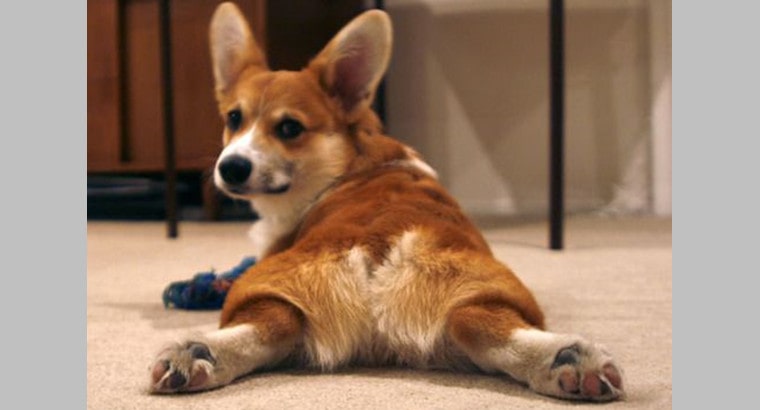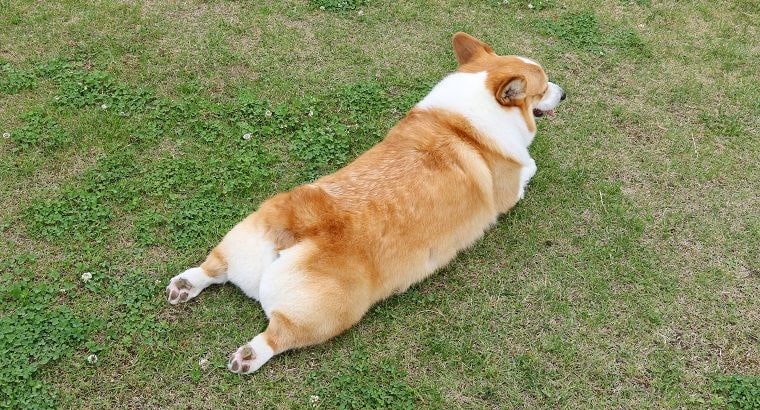Your furry friend has probably exhibited a range of different behaviors so far, some of which are borderline annoying, like chewing furniture, and some that are downright hilarious, like splooting. But why do dogs sploot anyway, and is it bad for them? Experts say it’s neither harmful nor concerning, though it may be a red flag in some cases.
What Is Splooting?
Put simply, splooting is enjoyed by most, if not all, dogs, and it entails lying on their bellies with their legs stretched behind them. Sometimes, this involves stretching only one leg behind or to the side. Smaller breeds, especially those with short legs, like Corgis and Chihuahuas, usually prefer stretching out both legs.
Why Do Dogs Sploot?

Image source: Pinterest
Generally speaking, there’s no harm in splooting — dogs usually do it because it feels good. Younger dogs are inherently more flexible than older ones, so it only feels natural and easy to stretch that way.
The full-body stretch dogs get from splooting is also super-comfortable. It may even let them relax more while snoozing on the couch or bed.
On a more practical note, some dogs sploot on floors, like tile or hardwood, because they’re trying to cool off. Pressing their bellies to the ground and stretching their legs is a fantastic way to get some full-body contact with the ground and use its cooling features.
Is It Bad for Dogs to Sploot?
Splooting shouldn’t harm dogs in any way. It’s not bad for their hips or joints, as it allows them to get a better stretch. In cases when they’re overheated, it’s a welcome addition to their routine and could keep them in better health overall.
That said, splooting in older dogs may indicate that the canine is in discomfort or pain. In some cases, splooting may be related to a few major conditions, like arthritis and osteoarthritis, hip dysplasia, and ataxia. The behavior is also typical in dogs that have suffered trauma, like torn ligaments and dislocation.
As a responsible pet owner, carefully monitor your dog’s behavior and check for any other signs of injury, trauma, and other uncomfortable changes. Consider whether your dog has changed its eating or playing habits, has a strange gait, prefers to lie or stand in awkward positions, and is generally cranky.
Any sudden behavioral and physical changes ought to be reviewed by a veterinarian. They will then determine if the splooting is a concerning symptom of an underlying condition or a simple quirk.
Featured image source: Pinterest.com










